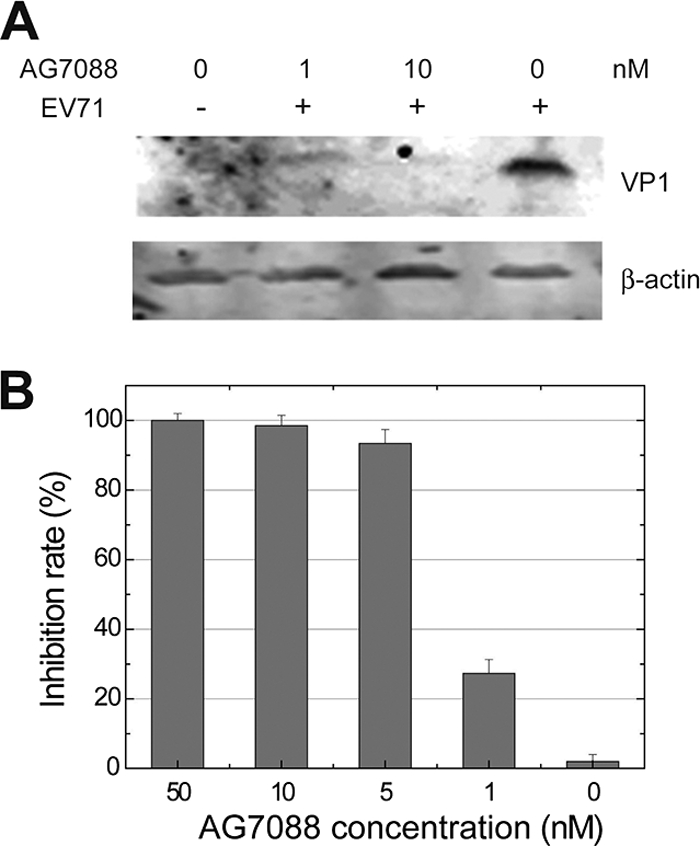Fig. 2.

Inhibition of EV71 by rupintrivir (AG7088). The efficacy of rupintrivir against EV71 was evaluated in antiviral assays. The data showed that rupintrivir was effective against EV71 (isolate BJ/CHN/2008) with a mean EC50 of ∼1 nM, which is comparable to the antiviral activities of rupintrivir against HRV or other picornaviruses. No obvious cytotoxicity was found by adding rupintrivir to RD cells. The antiviral activity of rupintrivir was further demonstrated using Western blotting and RT-PCR analyses. RD cells infected with EV71 showed less quantity of VP1 protein than that detected in the presence rupintrivir (1 or 10 nM). RT-PCR experiments detecting the quantities of viral RNAs in RD cells show that rupintrivir suppresses EV71 replication in a dose-dependent manner, which is consistent with the results from antiviral assays. (A) Cell lysates (40 μg protein per lane) were prepared from either mock-infected (lane 1) or EV71-infected RD cells at 24 h postinfection and resolved with 12% SDS-PAGE. Western blot analysis for VP1 or β-actin was conducted. Lane 1, mock-infected cells not treated with rupintrivir (AG7088); lanes 2 to 4, cells were treated with 1, 10, or 0 nM AG7088, respectively. The bands corresponding to EV71 VP1 are indicated. The expression of β-actin was used to control equal protein loading. (B) Cells seeded in 24-well plates were treated with different concentrations of AG7088 and infected with EV71 at an MOI of 0.1. Twenty-four h postinfection viral RNAs were extracted from cells, and real-time RT-PCR was performed. The inhibition rate (percent inhibition of viral RNA) is plotted as a function of inhibitor concentrations. The plotted data are averages from triplicates.
